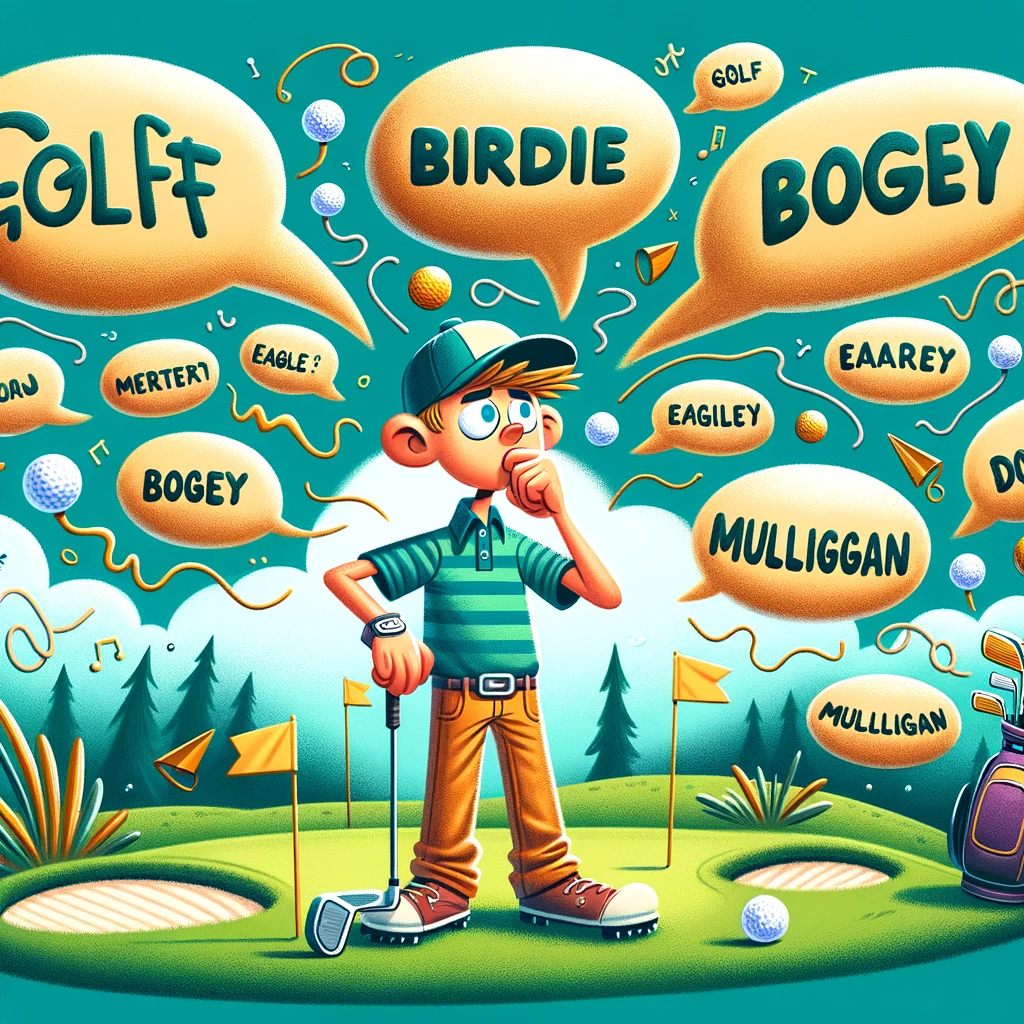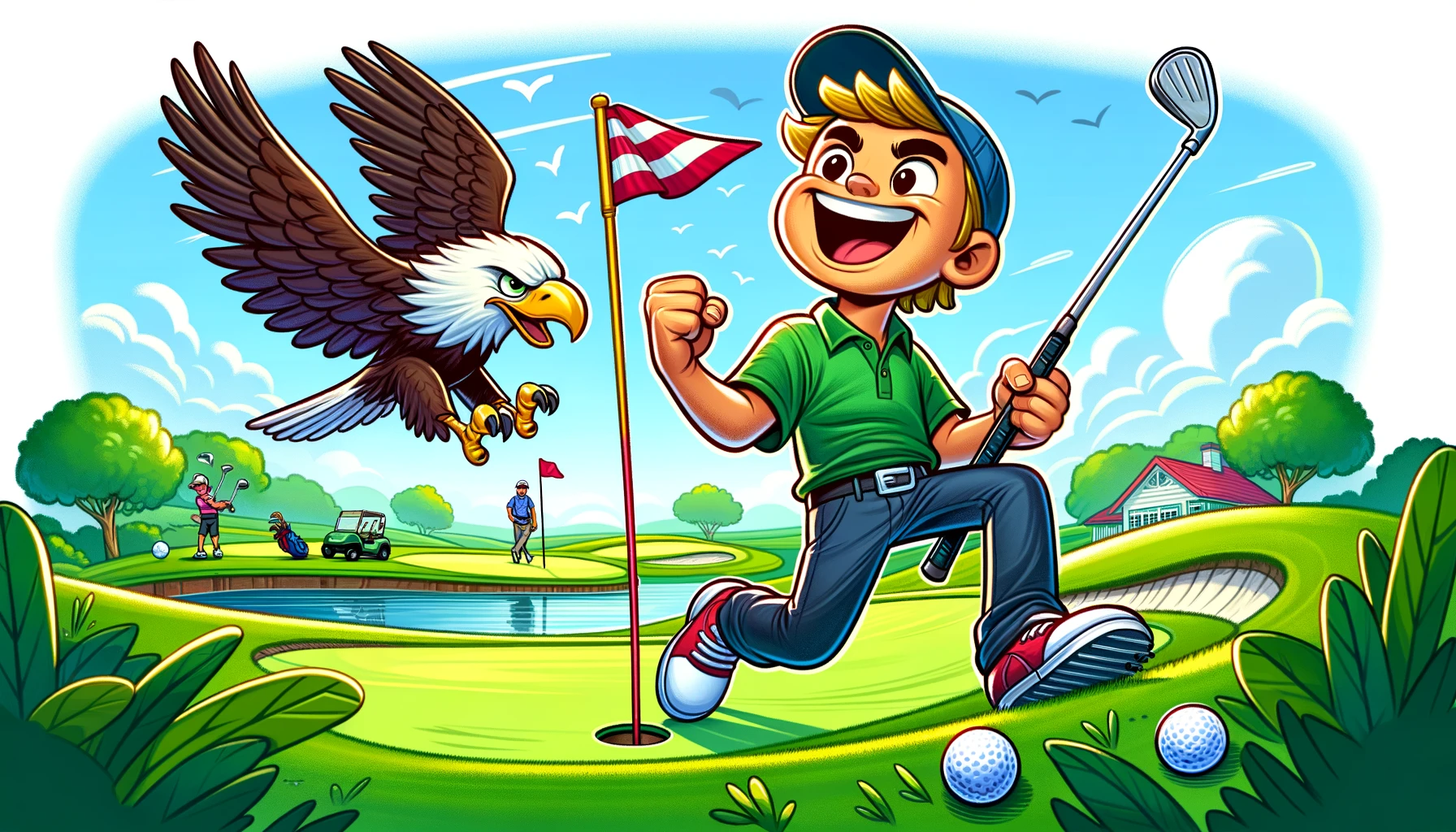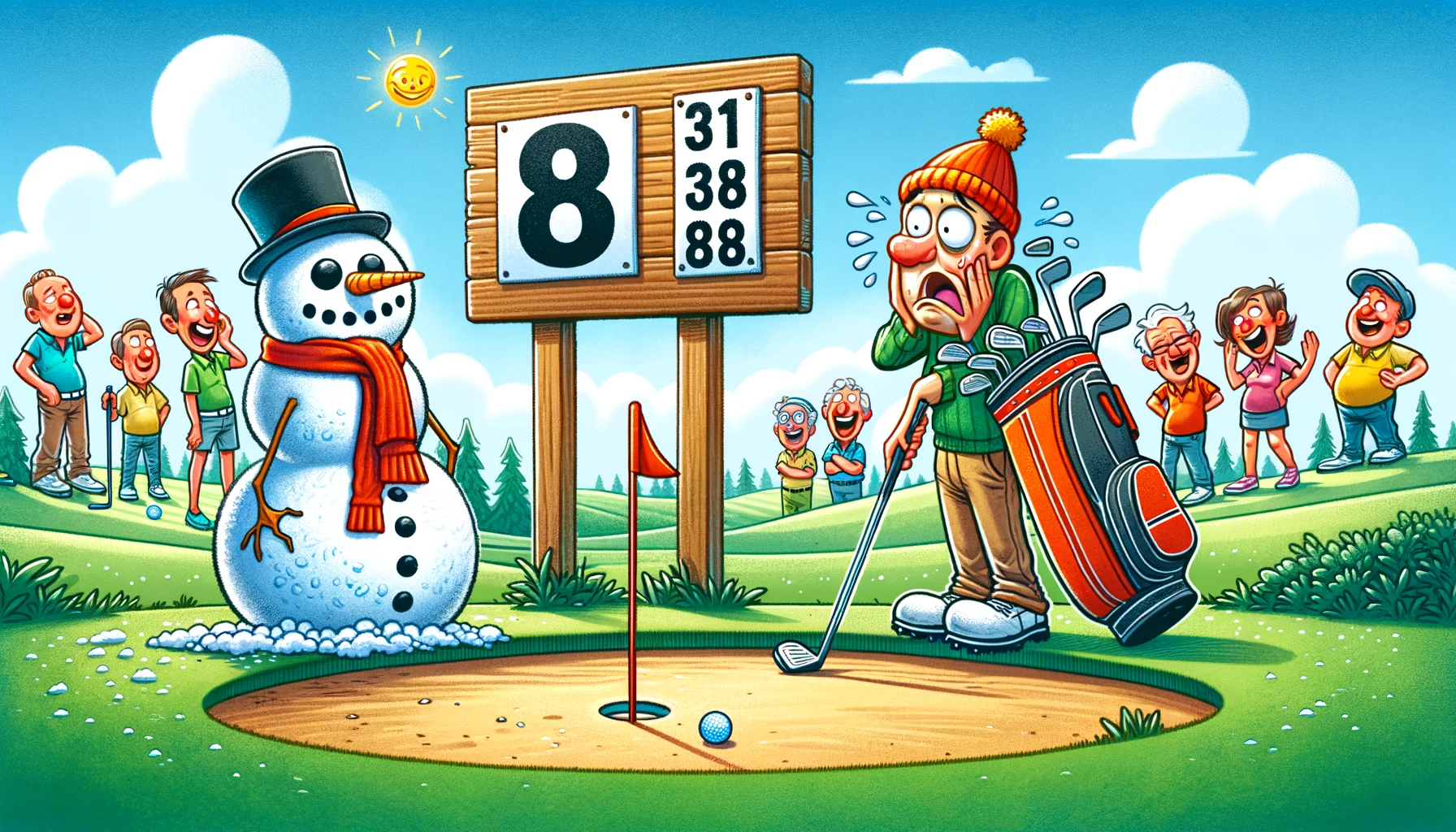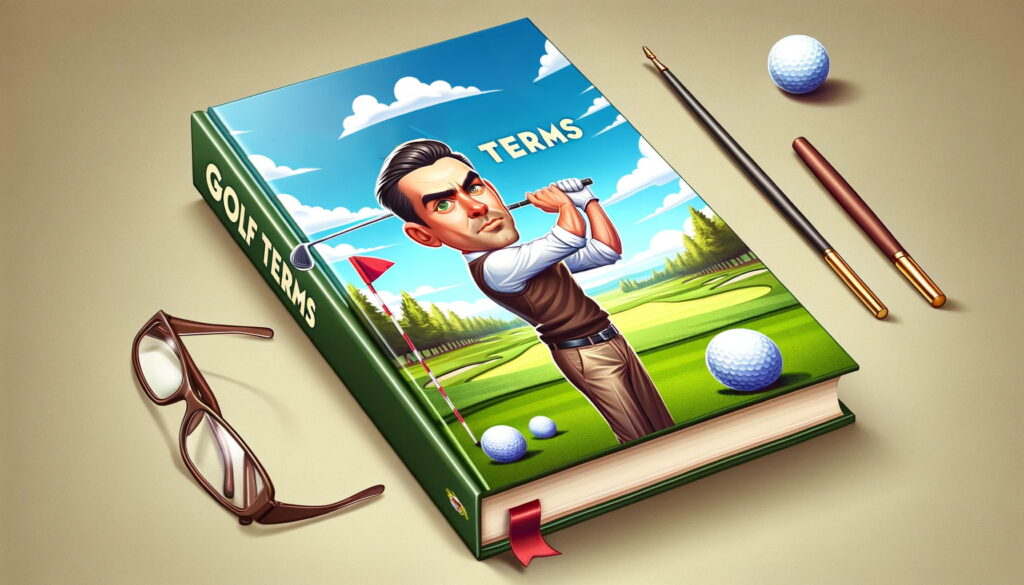Welcome to the wonderful world of golf—a game where the lush greens of the golf course serve as our arena, and the golf ball is our trusty steed. Whether you’re a scratch golfer or someone who can’t tell a birdie from an albatross, knowing the basic golf terms can be a game-changer.
Navigating the Golf Course: From Tee Box to the 18th Golf Hole

Every journey in golf begins at the tee box. It’s where hopes are high, and the perfect tee shot can set the tone for the round. But what’s beyond the tee? A stretch of manicured grass, known as the fairway, leads us to our ultimate goal—the golf hole. Along the way, we might encounter the occasional sand trap or water hazard, little tests of skill and patience that make the game all the more thrilling.
The Heartbeat of the Game: Scoring from Par to Double Bogey
Now, let’s talk about scoring. Par on a hole is the benchmark, the number of strokes in which a skilled golfer is expected to complete the hole. But golf also has its share of highs and lows. Score one under par? That’s a birdie—a reason to celebrate. Two under? That’s an eagle, soaring high. However, not all days are sunny in golf. Score one over par, and you’ve got a bogey. Two over? That’s a double bogey, a term you’d want to say as little as possible.
Golf Shot Mastery: Crafting the Perfect Golf Ball Approach
Every golf shot you take is a brush stroke on the canvas of your game. The drive, the approach shot, the putt—each has its place. The drive is your first shot, a display of power and direction. The approach shot requires precision, as it’s often what sets up a birdie opportunity. And then, there’s the putt. Some say it’s an art form, especially when you’re aiming for that very short putt to finish off the hole.
Choosing Your Arsenal: The Diversity of Golf Clubs
While the golf ball remains the same, the golf clubs you choose can vary as much as the shots you play. From the power of the driver to the precision of the irons, to the finesse of the putter, each club has a role to play. And let’s not forget the wedges—ideal for getting out of those pesky sand traps or for a chip shot onto the green.
The Spirit of the Game: Match Play vs. Stroke Play

As you delve deeper into the game, you’ll encounter different formats—match play and stroke play. Match play is a duel of sorts, where you compete hole by hole. Stroke play, on the other hand, is about the total number of strokes over the entire round or tournament. Both demand a strategic mind and a steady hand.
Beyond the Scorecard: Etiquette and Unwritten Rules
Golf isn’t just a test of skill—it’s a gentleman’s game, steeped in tradition and etiquette. Shouting “fore” when a ball hits dangerously off course or remaining silent as your opponent takes a putt are just as important as the strokes you play. And whether you’re a right-handed golfer or favor the left, the rules remain the same.
The Joy of the Hole in One: Golf’s Ultimate Prize
Speak to any golfer, and they’ll tell you about the magic of the hole in one—that elusive moment where with a single stroke, the ball lands perfectly in the cup. It’s a rare feat, one that every golfer, from the weekend warrior to the Ladies Professional Golf Association star, dreams of.
Embracing the Language of Golf
Whether it’s understanding a triple bogey or celebrating a double eagle, knowing the language of golf enhances the experience. For the average golfer or the aspiring pro, these terms are the threads that weave together the rich tapestry of this timeless sport.
So, next time you’re on the course, share these terms with a newcomer or use them to refine your own understanding of the game. After all, in golf, as in life, we’re all playing the same game—just navigating through different courses.
Terms you should know
Albatross (Double Eagle): Scoring three strokes under par on a hole.
Approach: The shot aimed at landing the ball on the green.
Back Nine: The last nine holes of an 18-hole golf course.
Birdie: Scoring one stroke under par on a hole.
Bogey: Scoring one stroke over par on a hole.
Bunker (Sand Trap): A hollow comprised of sand or grass meant to be an obstacle.
Caddie: A person who carries a player’s clubs and offers advice.
Chip: A short shot typically played from very close to the green.
Condor: Scoring four strokes under par, extremely rare.
Divot: The piece of turf displaced by the club when a shot is played.
Dogleg: A hole that bends at some point along its length.
Double Bogey: Scoring two strokes over par on a hole.
Draw: A shot that curves to the left for a right-handed player.
Drive: The first shot taken from the tee box, usually with a driver.
Eagle: Scoring two strokes under par on a hole.
Fade: A shot that curves to the right for a right-handed player.
Fairway: The area between the tee box and the green that is well-maintained.
Green: The area of specially prepared grass around the hole where putts are played.
Handicap: A numerical measure of a golfer’s potential ability.
Hazard: Any bunker or permanent water feature.
Hook: A shot that curves sharply to the left for a right-handed player.
Interlocking Grip: Fingers are interlocked in a specific way on the club.
Iron: A type of club with a flat, angled face and a shorter shaft.
Lag: A long putt aimed more at positioning than sinking the ball.
Lie: The position of the ball when it comes to rest.
Links: A type of golf course typically found in coastal areas.
Lob: A short, high-arc shot intended to clear an obstacle.
Mulligan: Informally, a “do-over” shot allowed after a poor shot.
Out of Bounds: The area designated as being outside the playable boundary of the course.
Par: The number of strokes a skilled golfer should require to complete the hole.
Pitch: A short shot, usually from 50-60 yards, aimed at flying high and landing softly.
Putter: A club with a flat face used for putting on the green.
Rough: The area of long grass that borders the fairway.
Sand Wedge: A type of club used to hit the ball out of a sand bunker.
Scramble: A type of golf game where players choose the best tee shot and all play from that spot.
Shank: A poor shot where the ball is hit with the heel of the club, often going sharply right.
Slice: A shot that curves dramatically to the right for a right-handed player.
Stance: The position of the feet when preparing to hit the ball.
Stroke Play: A scoring system where the player with the fewest strokes wins.
Tee Box: The starting place for the hole to be played.
Tee Shot: The first shot played from the tee box.
Top: A poor shot where the club head hits the ball above its equator.
Triple Bogey: Scoring three strokes over par on a hole.
Wedge: A type of club designed for short distance, high accuracy shots.
Wood: A type of club with a large head used for long-distance shots.
Yips: Nervousness or twitchiness causing a golfer to miss easy putts.
Foursome: A group of four players playing together.
Gimme: A putt that is so close to the hole that it is given to the player without being played.
Grounding: Touching the ground with the club before playing the ball, which is illegal in a hazard.
Match Play: A format where players or teams compete to win individual holes.
FAQs
What Are Some Funny Golfing Terms?
Golf is sprinkled with humorous terms that add a light-hearted touch to the game. For instance, a ‘Snowman’ refers to scoring an eight on a hole, visually reminiscent of the figure ‘8’. ‘Mulligan’ is another popular term, an unofficial do-over for a poor shot, much to every golfer’s secret relief.
Then there’s ‘Dormie,’ used in match play when a player is up by the same number of holes that are left, essentially making it impossible to lose in regulation. These terms bring a smile and make the game more enjoyable, especially during a less-than-perfect round.
What Is the Best Shot in Golf Called?
The most celebrated shot in golf is the ‘Hole in One,’ also known as an ‘Ace.’ This rare feat occurs when a golfer hits the ball directly from the tee into the hole with just one stroke. It’s a pinnacle moment for any golfer, combining skill, precision, and a bit of luck.
Achieving a hole in one is so remarkable that it often becomes a cherished memory in a golfer’s career, sometimes even commemorated with a plaque or special mention at the golf club.
What Are Golf Score Terms?

Golf score terms are essential to understanding the game’s scoring system. The most common terms are ‘Par,’ which is the number of strokes a skilled golfer is expected to make to sink the ball, ‘Birdie’ for one stroke under par, and ‘Eagle’ for two under par. On the flip side, ‘Bogey’ means one stroke over par, ‘Double Bogey’ for two over, and ‘Triple Bogey’ for three over.
These terms provide a quick reference to a golfer’s performance relative to the expected standard.
What Are Basic Golf Terms?
Basic golf terms include ‘Tee Box,’ the starting point of each hole; ‘Fairway,’ the well-maintained area between the tee box and the green; ‘Green,’ where the hole is located; and ‘Rough,’ the tougher grass areas surrounding the fairway.
Other terms are ‘Bunker,’ a sand-filled pit; ‘Hazard,’ any difficult area like water or sand; and ‘Putt,’ the stroke used on the green. These terms form the fundamental vocabulary for anyone learning or watching the sport.
What Is 4 Strokes Under Par Called?
Scoring four strokes under par on a single hole in golf is known as a ‘Condor.’ This extraordinary feat is incredibly rare, often possible only on par 5s with a significant drive and favorable conditions.
A condor is so exceptional in the world of golf that many players may never witness it in their playing careers.
What Are Some Golf Terminology?
Golf terminology encompasses a wide range of phrases and words. ‘Drive’ refers to the first stroke from the tee box. ‘Fore’ is a warning shout when the ball is heading towards someone. ‘Handicap’ is a numerical representation of a golfer’s playing ability. ‘Lie’ describes the ball’s position when it comes to rest.
‘Stroke Play’ and ‘Match Play’ are two main types of scoring systems. Understanding these terms is crucial for players and fans alike to fully engage with the sport.
What Are Unusual Golf Terms?
Unusual golf terms add flavor and character to the game. ‘Fried Egg’ describes a ball buried in the sand, resembling a sunny-side-up egg. ‘Albatross’ or ‘Double Eagle’ is a rare three strokes under par. ‘Yips’ refer to nervous twitches that affect putting.
‘Shank’ is an errant shot where the ball veers sharply off course, and ‘Gimme’ is a shot so close to the hole that it’s assumed to be made. These terms, while less common, are part of the rich vocabulary that makes golf unique.







